Are you planning a trip to Vietnam and wondering where to find the revered Tran Thuong Temple? Tran Thuong Temple is located in Ha Nam province and is a very special place. SIXT.VN is here to guide you on your journey to this historical and cultural gem, ensuring a smooth and memorable experience with our reliable travel services. From convenient airport transfers to comfortable hotel bookings, and insightful tours, we are your trusted partner in exploring Vietnam’s rich heritage.
1. What Province Is Tran Thuong Temple In?
Tran Thuong Temple is in Ha Nam province, specifically in Tran Thuong hamlet, Nhan Dao commune, Ly Nhan district. Ha Nam is located in the Red River Delta region of Vietnam and is known for its historical sites and cultural significance. According to the Ha Nam Province Statistical Office, the province welcomed over 2 million tourists in 2023, highlighting its increasing popularity as a travel destination.
1.1 How Can I Get To Ha Nam Province?
Getting to Ha Nam province is quite accessible, with several transportation options available.
- By Car: Renting a car with SIXT.VN offers a flexible way to travel. You can drive from Hanoi to Ha Nam in about 1.5 to 2 hours, enjoying the scenic countryside along the way.
- By Bus: Buses are a convenient and affordable option. Several bus companies operate daily routes from Hanoi to Ly Nhan district, where Tran Thuong Temple is located. The journey takes approximately 2 to 2.5 hours.
- By Train: You can take a train from Hanoi to Phu Ly, the capital city of Ha Nam province, and then take a taxi or bus to Ly Nhan district. The train journey to Phu Ly is about 1 to 1.5 hours. SIXT.VN provides transportation from Phu Ly to your final destination.
1.2 What Is The Best Time To Visit Tran Thuong Temple?
The best time to visit Tran Thuong Temple is during the dry season, which runs from November to April. The weather is cooler and there is less rain, making it ideal for outdoor activities and exploration. Specifically, consider visiting during the Tran Thuong Temple Festival, which takes place from the 18th to the 20th day of the eighth lunar month, or the food-distributing festival on the 14th day of the first lunar month. These festivals offer a unique cultural experience.
1.3 Are There Any Accommodations Near Tran Thuong Temple?
Yes, there are several accommodations near Tran Thuong Temple, ranging from budget-friendly guesthouses to more comfortable hotels.
- Hotels in Phu Ly: The capital city of Ha Nam province, Phu Ly, offers a variety of hotels with different price points and amenities. SIXT.VN can assist you in finding and booking accommodations that fit your needs and budget.
- Guesthouses in Ly Nhan District: For a more local experience, consider staying in a guesthouse in Ly Nhan district. These guesthouses provide basic but comfortable accommodations and are often located closer to the temple.
- Homestays: A few homestays in the surrounding villages offer a unique opportunity to experience local life. These homestays usually provide meals and activities that allow you to immerse yourself in the local culture.
SIXT.VN can help you book the perfect stay, ensuring a comfortable and convenient experience.
2. What Is The Historical Significance Of Tran Thuong Temple?
Tran Thuong Temple holds immense historical significance as it is dedicated to Tran Hung Dao (1228-1300), a revered national hero and the supreme commander of Vietnam during the Tran Dynasty. He is celebrated for his pivotal role in repelling three major Mongolian invasions in the 13th century. According to historical records, Tran Hung Dao selected Nhan Dao commune in Ly Nhan district as a strategic food storage area to supply his army during these critical battles.
2.1 Why Is Tran Hung Dao So Important To Vietnamese History?
Tran Hung Dao, also known as Prince Hung Dao, is one of the most celebrated military strategists and national heroes in Vietnamese history. His brilliant leadership and innovative tactics were instrumental in defeating the Mongol invaders, who were at that time one of the most powerful military forces in the world. His victories not only secured Vietnam’s independence but also demonstrated the strength and resilience of the Vietnamese people.
2.2 How Does The Temple Commemorate Tran Hung Dao?
Tran Thuong Temple serves as a place of worship and remembrance for Tran Hung Dao. Every year, the Tran Thuong Temple Festival is held from the 18th to the 20th day of the eighth lunar month to commemorate his great merit and celebrate his victories. The festival includes various traditional ceremonies, cultural performances, and activities that attract thousands of visitors from all over the country.
2.3 What Is The “Food-Distributing” Festival At Tran Thuong Temple?
The food-distributing festival is one of the most significant events held at Tran Thuong Temple. It takes place on the 14th day of the first lunar month and symbolizes the distribution of food to the army by Tran Hung Dao during the war against the Mongols. The festival involves a procession of food from the warehouse to the temple, an incense-offering ceremony, and the distribution of food to the community, fostering a sense of unity and shared prosperity.
This celebration is more than just a historical reenactment; it’s a vibrant expression of cultural identity and collective memory. It allows the younger generation to connect with their heritage and understand the sacrifices made by their ancestors.
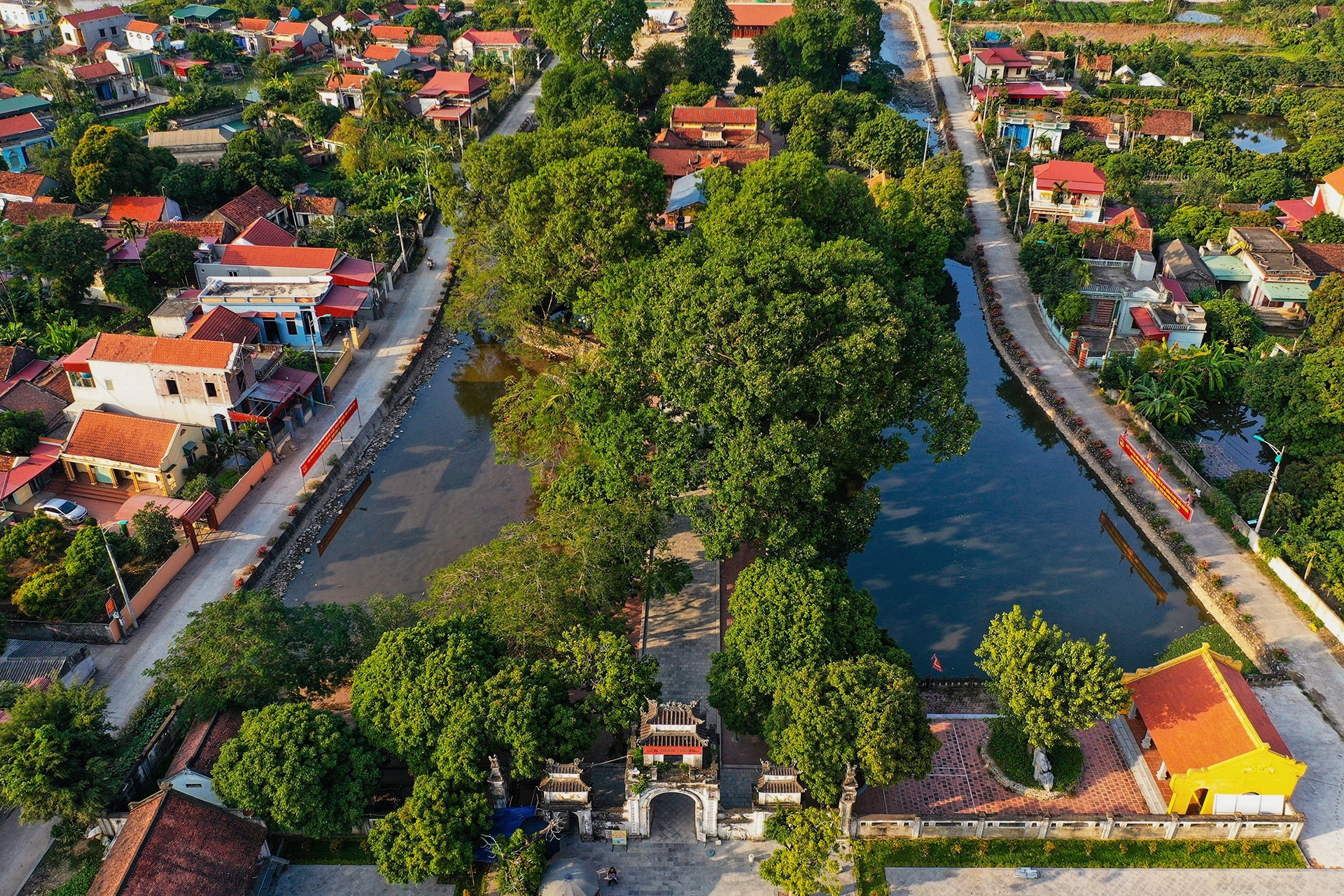 Tran Thuong Temple is dedicated to Tran Hung Dao, the supreme commander of Vietnam in the Tran Dynasty, celebrated for repelling Mongolian invasions.
Tran Thuong Temple is dedicated to Tran Hung Dao, the supreme commander of Vietnam in the Tran Dynasty, celebrated for repelling Mongolian invasions.
3. What Architectural Features Can I Find At Tran Thuong Temple?
Tran Thuong Temple showcases traditional Vietnamese architecture with intricate designs and motifs. The temple complex includes:
- Nghi Mon (Gate): The external and inner Nghi Mon serve as the entrance to the temple, featuring elaborate carvings and symbolic decorations.
- Five Buildings: The temple consists of five buildings divided into 15 compartments, forming three palaces: First Palace, Second Palace, and Third Palace.
- Ngoc (Pearl) Wells: The temple grounds include five Ngoc wells, adding to the serene and sacred atmosphere.
3.1 Can You Describe The Decorations Inside The Temple?
The architectural decorations inside Tran Thuong Temple are rich and detailed, featuring various themes and motifs. These include:
- Dragons and Phoenixes: Images of two dragons gazing at the moon, flying dragons, and dancing phoenixes symbolize power, prosperity, and harmony.
- Water and Clouds: Depictions of water, waves, and clouds represent the natural elements and the fluidity of life.
- Elaborate Carvings: The temple’s wooden structures are adorned with intricate carvings that showcase the skill and artistry of Vietnamese craftsmen.
3.2 Are There Any Ancient Artifacts Preserved At The Temple?
Yes, Tran Thuong Temple preserves many ancient worshiping objects, including:
- Worshiping Throne: An ornately decorated throne used during religious ceremonies.
- Statues of Nghe and Tortoises: Statues of mythical creatures and tortoises, symbolizing protection and longevity.
- Incense Bowls: Antique incense bowls used for burning incense during prayers.
- Horizontal Lacquered Boards and Couplets: Ancient boards and couplets with inscribed messages and poems.
- Antique Bells: Bells used to announce ceremonies and gatherings.
- Silver Sword: A silver sword with a sheath made of precious tortoise shells, displayed only on festive days.
3.3 How Old Is The Temple And How Has It Been Preserved?
Tran Thuong Temple has a rich history dating back centuries. While the exact date of its initial construction is not definitively known, the temple has been restored and preserved over the years to maintain its historical and cultural significance. In 1989, it was classified as a national historical-cultural relic, and in December 2015, it was recognized as a Special National Relic site, ensuring its protection and preservation for future generations.
Visiting Tran Thuong Temple is like stepping back in time, allowing you to appreciate the architectural and artistic achievements of past eras. The temple’s preservation reflects the community’s commitment to safeguarding their cultural heritage.
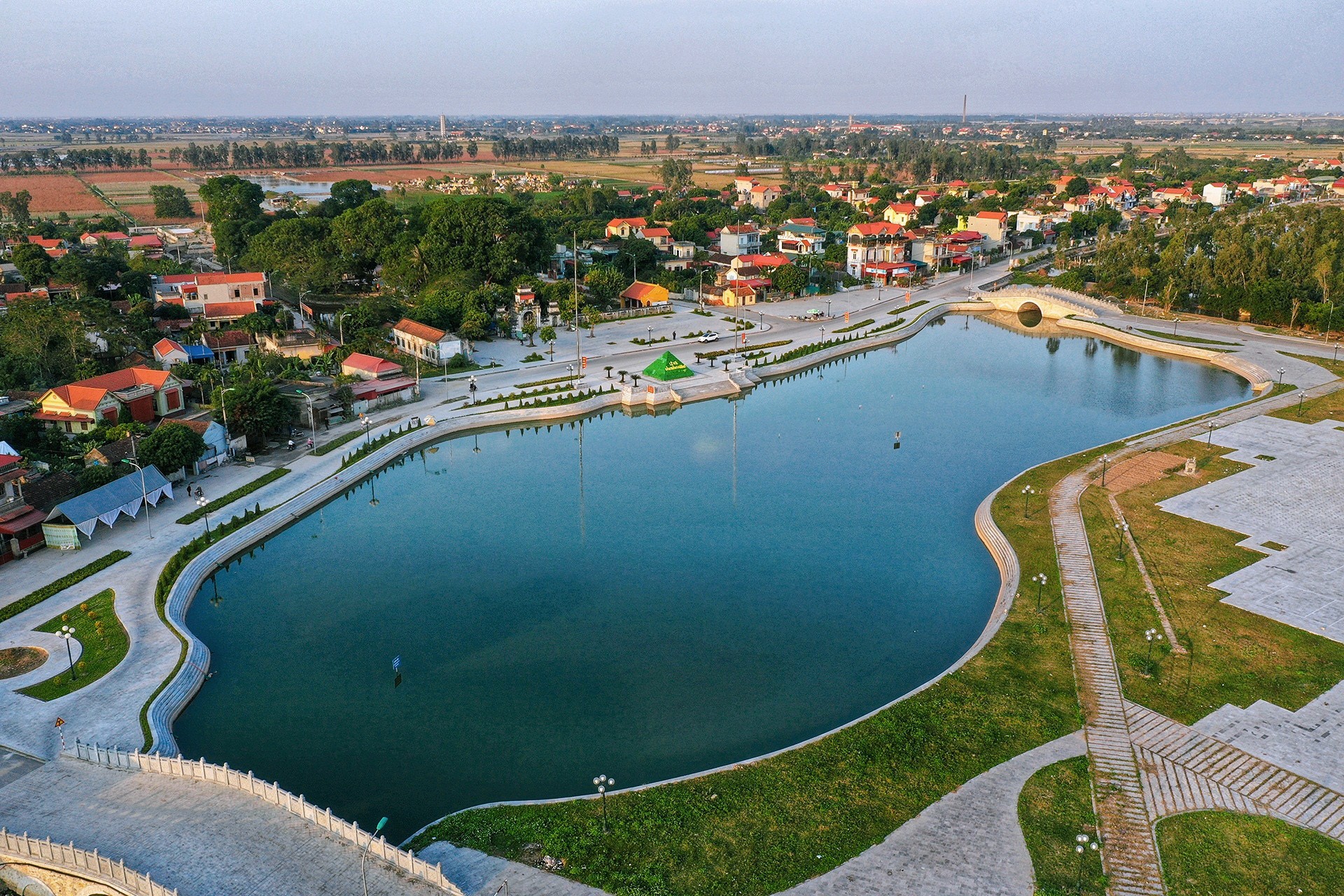 The temple consists of external and inner nghi mon, five buildings with 15 compartments, and five Ngoc (Pearl) wells, showcasing traditional Vietnamese architectural elements.
The temple consists of external and inner nghi mon, five buildings with 15 compartments, and five Ngoc (Pearl) wells, showcasing traditional Vietnamese architectural elements.
4. What Are The Key Activities During The Tran Thuong Temple Festival?
The Tran Thuong Temple Festival, held annually from the 18th to the 20th day of the eighth lunar month, is a vibrant celebration filled with various activities:
- Traditional Ceremonies: The festival begins with solemn ceremonies to honor Tran Hung Dao and other historical figures.
- Cultural Performances: Traditional music, dance, and theater performances showcase the rich cultural heritage of Vietnam.
- Folk Games: Visitors can participate in folk games and activities that promote community spirit and entertainment.
- Food Stalls: Numerous food stalls offer a variety of local delicacies, allowing visitors to savor the flavors of Ha Nam province.
4.1 Can You Describe The Incense-Offering Ceremony?
The incense-offering ceremony is a central part of the Tran Thuong Temple Festival. During this ceremony, representatives from the community offer incense, flowers, and other offerings to the altar of Tran Hung Dao, expressing their respect and gratitude for his contributions to the nation. The ceremony is accompanied by traditional music and chanting, creating a solemn and reverent atmosphere.
4.2 What Kind Of Cultural Performances Can I Expect To See?
Visitors to the Tran Thuong Temple Festival can expect to see a variety of captivating cultural performances, including:
- Cheo: A traditional form of Vietnamese opera that combines singing, dancing, and acting.
- Ca Tru: An ancient genre of chamber music featuring female vocalists and instrumental accompaniment.
- Lion Dance: A vibrant and energetic dance performed by dancers in lion costumes, symbolizing good luck and prosperity.
- Water Puppetry: A unique form of puppetry performed on water, showcasing traditional stories and legends.
4.3 How Does The Festival Promote Community Spirit?
The Tran Thuong Temple Festival plays a vital role in promoting community spirit by bringing people together to celebrate their shared heritage. The festival provides opportunities for locals and visitors to interact, participate in communal activities, and strengthen their bonds. According to a study by the Vietnam National Institute of Culture and Arts Studies, festivals like the Tran Thuong Temple Festival enhance social cohesion and promote cultural identity (Vietnam National Institute of Culture and Arts Studies, 2018, The Role of Festivals in Community Development).
Attending the Tran Thuong Temple Festival is a chance to witness the vibrant culture and strong community spirit of Ha Nam province. It’s an experience that leaves a lasting impression.
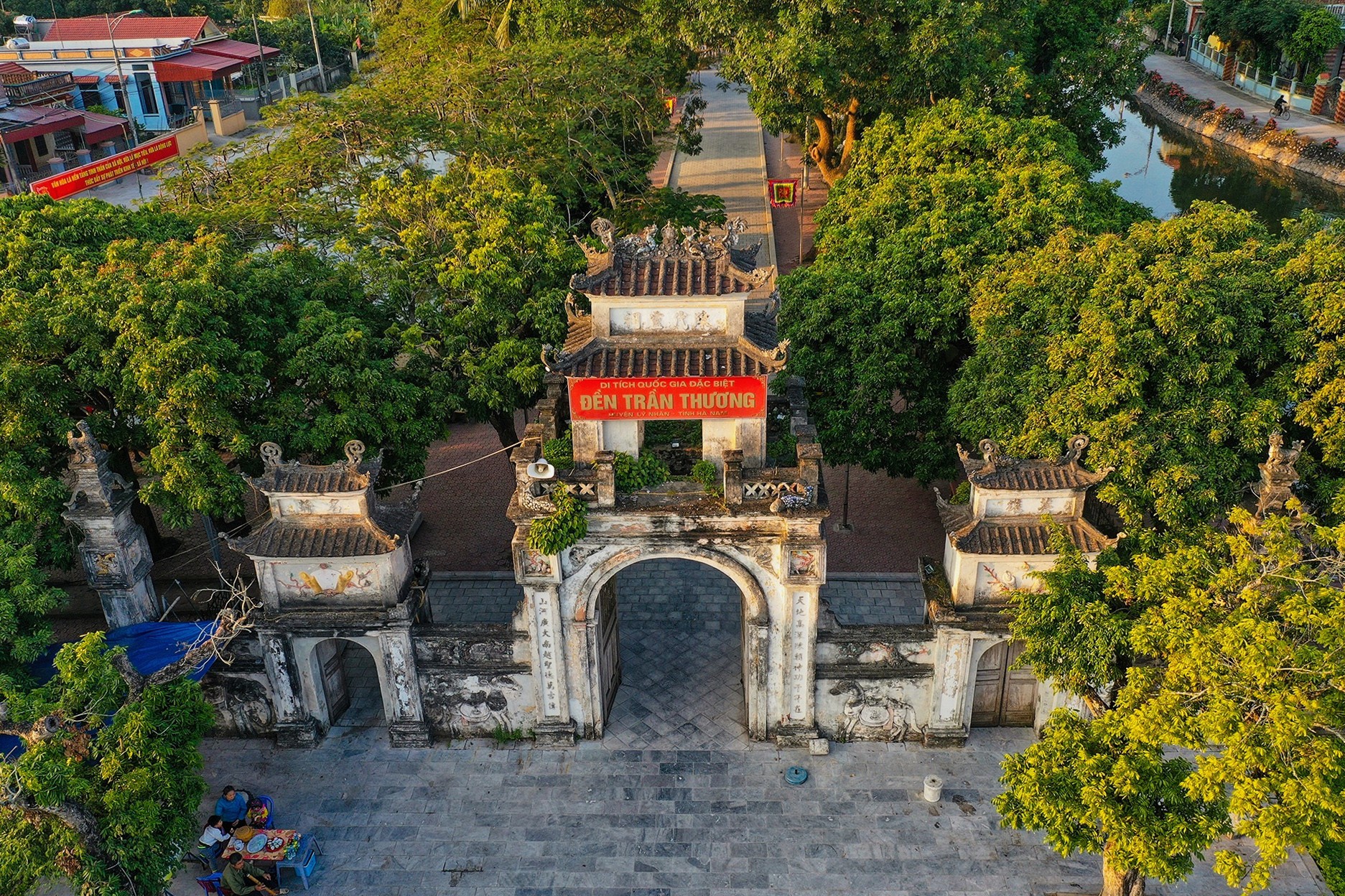 Tran Thuong Temple was recognized as a special national relic site in December 2015.
Tran Thuong Temple was recognized as a special national relic site in December 2015.
5. What Is The Significance Of The Food-Distributing Festival?
The food-distributing festival at Tran Thuong Temple is a significant event that commemorates a historical act of generosity and military strategy. It symbolizes the time when Tran Hung Dao distributed food supplies to his soldiers, ensuring their strength and readiness to fight against the Mongol invaders. This act of providing sustenance to the troops is remembered as a symbol of unity, care, and strategic planning.
5.1 How Is The Food Procession Organized?
The food procession is a key part of the food-distributing festival. It involves the following steps:
- Preparation: Local communities prepare a variety of traditional foods, such as rice, cakes, and fruits, to be distributed.
- Procession: The prepared food is carried in a ceremonial procession from a designated warehouse to the Tran Thuong Temple.
- Offerings: At the temple, the food is offered to Tran Hung Dao and other deities as a sign of respect and gratitude.
- Distribution: After the offerings, the food is distributed to the community, symbolizing the sharing of resources and blessings.
5.2 What Kind Of Food Is Typically Distributed During The Festival?
During the food-distributing festival, a variety of traditional Vietnamese foods are distributed, including:
- Cooked Rice: A staple food representing sustenance and nourishment.
- Banh Chung and Banh Day: Traditional cakes made from glutinous rice, symbolizing the earth and the sky.
- Fruits: Fresh fruits representing prosperity and abundance.
- Local Specialties: Various local dishes and delicacies unique to the Ha Nam province.
5.3 How Does This Festival Reflect Vietnamese Cultural Values?
The food-distributing festival at Tran Thuong Temple reflects several important Vietnamese cultural values, including:
- Gratitude: Expressing gratitude to ancestors and national heroes for their contributions.
- Community: Promoting a sense of community and shared responsibility.
- Generosity: Emphasizing the importance of sharing resources and helping those in need.
- Respect: Showing respect for tradition, history, and cultural heritage.
According to research by the Institute for Southeast Asian Studies, traditional festivals in Vietnam play a crucial role in reinforcing cultural values and promoting social harmony (Institute for Southeast Asian Studies, 2020, Cultural Values in Vietnamese Festivals).
Participating in the food-distributing festival offers a deep insight into the values that shape Vietnamese society. It’s an enriching experience that connects you to the heart of the culture.
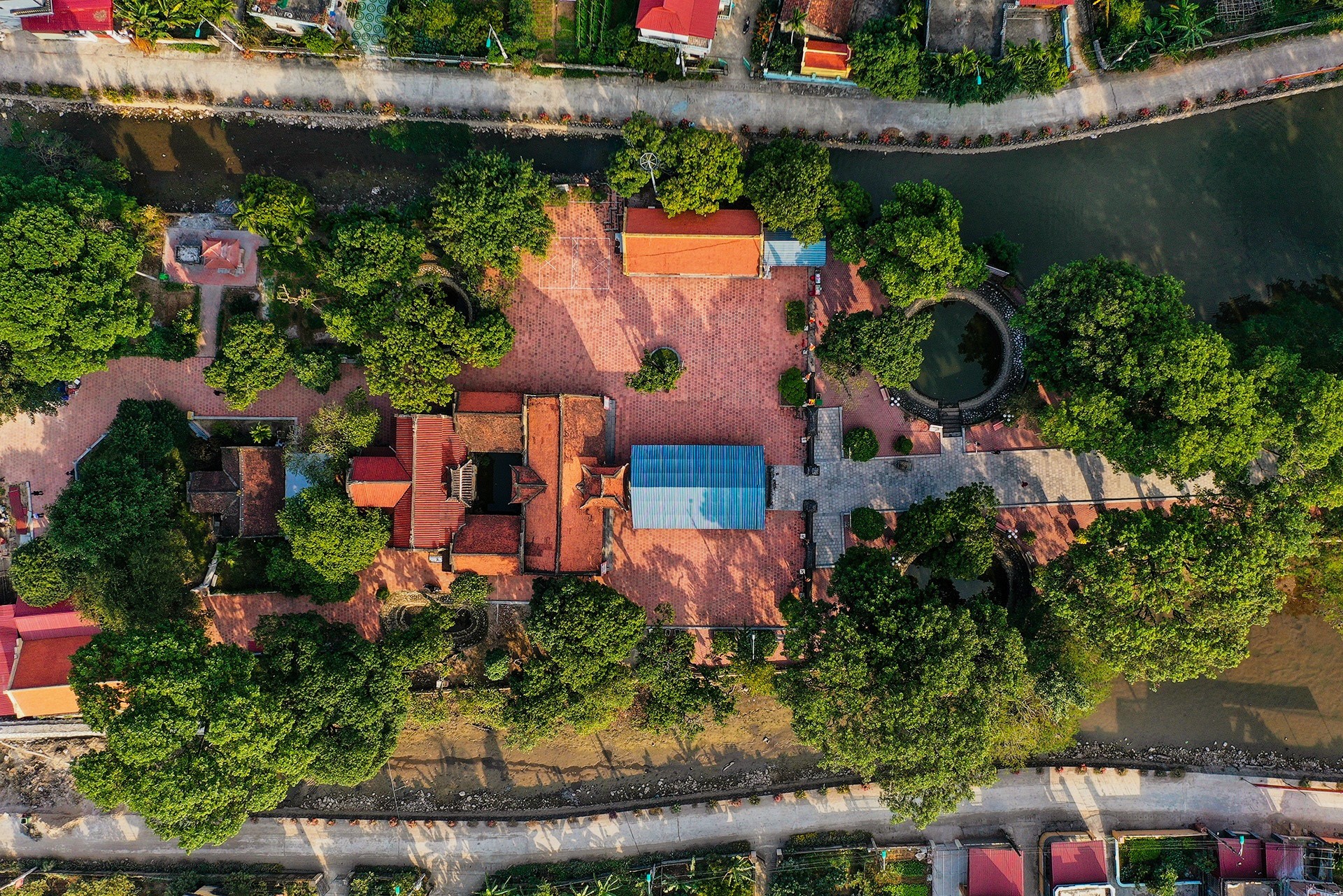 The festival of Tran Thuong Temple, commemorating the great merit of General Tran Hung Dao, is celebrated annually from the 18th to 20th day of the eighth lunar month.
The festival of Tran Thuong Temple, commemorating the great merit of General Tran Hung Dao, is celebrated annually from the 18th to 20th day of the eighth lunar month.
6. How Can SIXT.VN Enhance My Visit To Tran Thuong Temple?
SIXT.VN offers a range of services to make your visit to Tran Thuong Temple seamless and enjoyable:
- Airport Transfers: Start your journey stress-free with our reliable airport transfer services from Hanoi to Ha Nam province.
- Car Rentals: Explore the region at your own pace with our diverse selection of vehicles to suit your needs.
- Hotel Bookings: Find and book the perfect accommodation near Tran Thuong Temple with our extensive hotel options.
- Tour Packages: Discover the best of Ha Nam province with our expertly curated tour packages.
6.1 What Are The Benefits Of Using SIXT.VN For Airport Transfers?
Using SIXT.VN for airport transfers offers several benefits:
- Convenience: Pre-book your transfer and avoid the hassle of finding transportation upon arrival.
- Reliability: Our professional drivers ensure timely and safe transportation to your destination.
- Comfort: Travel in comfort with our well-maintained vehicles and experienced drivers.
- Fixed Prices: Enjoy transparent and fixed prices, with no hidden fees.
6.2 How Can SIXT.VN Help Me Find The Best Accommodation?
SIXT.VN simplifies the process of finding the best accommodation by:
- Providing a Wide Selection: Offering a wide range of hotels, guesthouses, and homestays to suit your preferences and budget.
- Offering User Reviews: Providing user reviews and ratings to help you make informed decisions.
- Offering Competitive Prices: Ensuring competitive prices and exclusive deals to save you money.
- Offering Easy Booking: Providing an easy-to-use booking platform for quick and secure reservations.
6.3 What Types Of Tour Packages Does SIXT.VN Offer For Ha Nam Province?
SIXT.VN offers various tour packages for Ha Nam province, including:
- Historical Tours: Explore the historical sites of Ha Nam, including Tran Thuong Temple and other cultural landmarks.
- Cultural Tours: Immerse yourself in the local culture with visits to traditional villages, craft workshops, and local markets.
- Nature Tours: Discover the natural beauty of Ha Nam with visits to scenic landscapes, parks, and nature reserves.
- Custom Tours: Tailor your own tour package to suit your specific interests and preferences.
With SIXT.VN, your trip to Tran Thuong Temple and Ha Nam province is guaranteed to be smooth, memorable, and enriching. Let us take care of the details so you can focus on enjoying the experience.
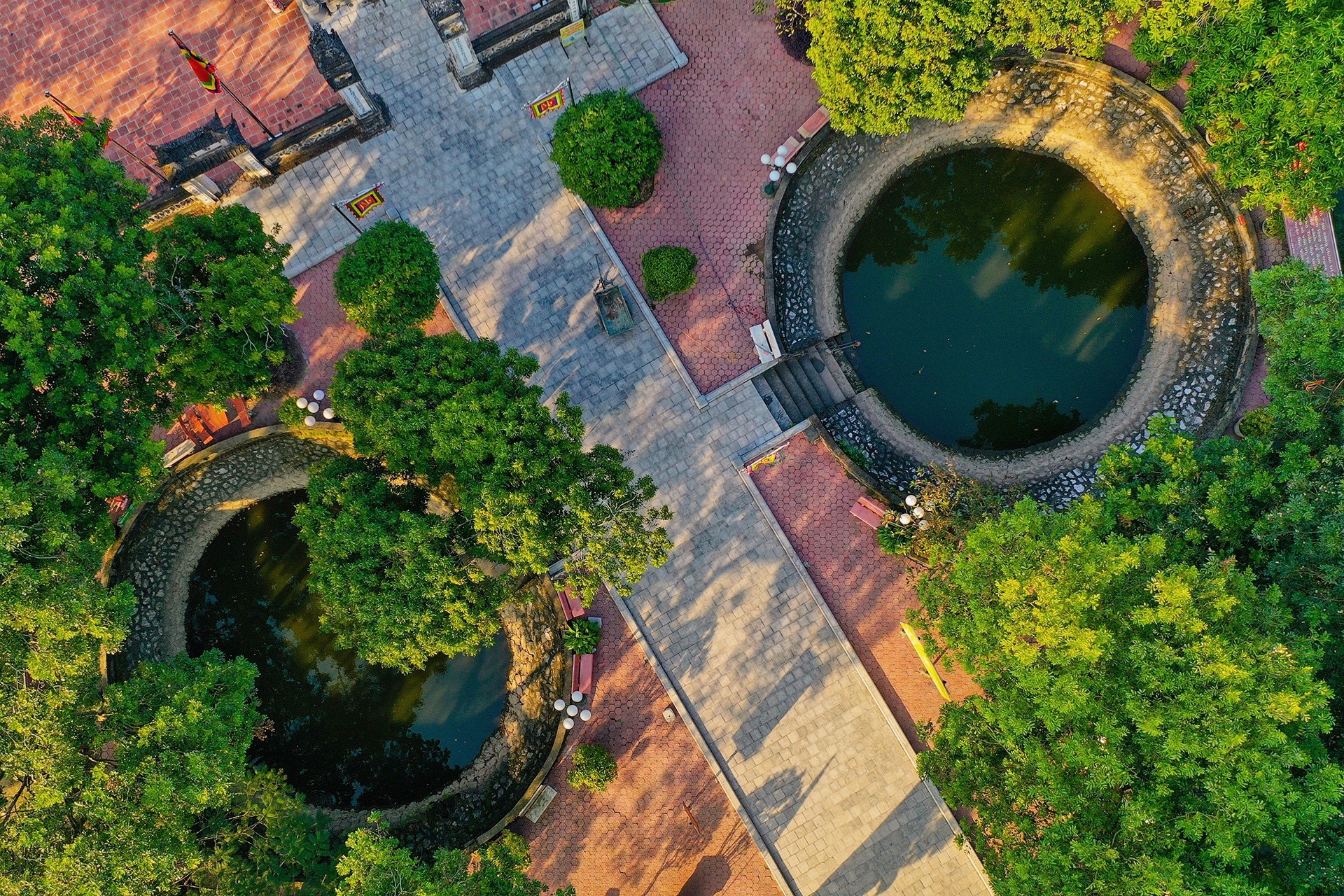 The food-distributing festival in Tran Thuong Temple is one of the largest festivals in Ha Nam Province.
The food-distributing festival in Tran Thuong Temple is one of the largest festivals in Ha Nam Province.
7. What Other Attractions Are Near Tran Thuong Temple?
While visiting Tran Thuong Temple, consider exploring other nearby attractions in Ha Nam province:
- Tam Chuc Pagoda: A stunning Buddhist complex with impressive architecture and serene landscapes.
- Ba Danh Pagoda: An ancient pagoda known for its historical significance and peaceful atmosphere.
- Kieu Pagoda: A beautiful pagoda set amidst lush greenery, offering a tranquil retreat.
- Truong Luu Village: A traditional village known for its ancient houses and cultural heritage.
7.1 Can You Tell Me More About Tam Chuc Pagoda?
Tam Chuc Pagoda is one of the largest and most impressive Buddhist complexes in Vietnam. It features:
- Magnificent Temples: Several grand temples with intricate designs and towering statues.
- Scenic Lakes: Beautiful lakes and waterways that enhance the serene atmosphere.
- Natural Landscapes: Lush green hills and forests that provide a stunning backdrop.
- Cultural Significance: A rich history and cultural significance as a center of Buddhist worship.
According to the Vietnam National Administration of Tourism, Tam Chuc Pagoda is a must-visit destination for those interested in Vietnamese culture and spirituality (Vietnam National Administration of Tourism, 2022, Top Attractions in Ha Nam).
7.2 What Is Special About Ba Danh Pagoda?
Ba Danh Pagoda is an ancient pagoda with a rich history and peaceful ambiance. Key features include:
- Historical Architecture: Traditional Vietnamese architecture with ancient structures and carvings.
- Religious Artifacts: A collection of religious artifacts and relics that reflect its historical significance.
- Tranquil Setting: A serene and tranquil setting surrounded by lush greenery.
- Cultural Events: Hosting various cultural and religious events throughout the year.
7.3 Why Should I Visit Truong Luu Village?
Truong Luu Village offers a glimpse into traditional Vietnamese rural life. Highlights of the village include:
- Ancient Houses: Well-preserved ancient houses that showcase traditional architecture.
- Cultural Heritage: A rich cultural heritage with traditional customs, crafts, and festivals.
- Local Crafts: Opportunities to observe and participate in local crafts, such as weaving and pottery.
- Authentic Experience: An authentic and immersive experience of Vietnamese village life.
Exploring these nearby attractions can greatly enrich your visit to Tran Thuong Temple, providing a deeper understanding and appreciation of the cultural and historical significance of Ha Nam province.
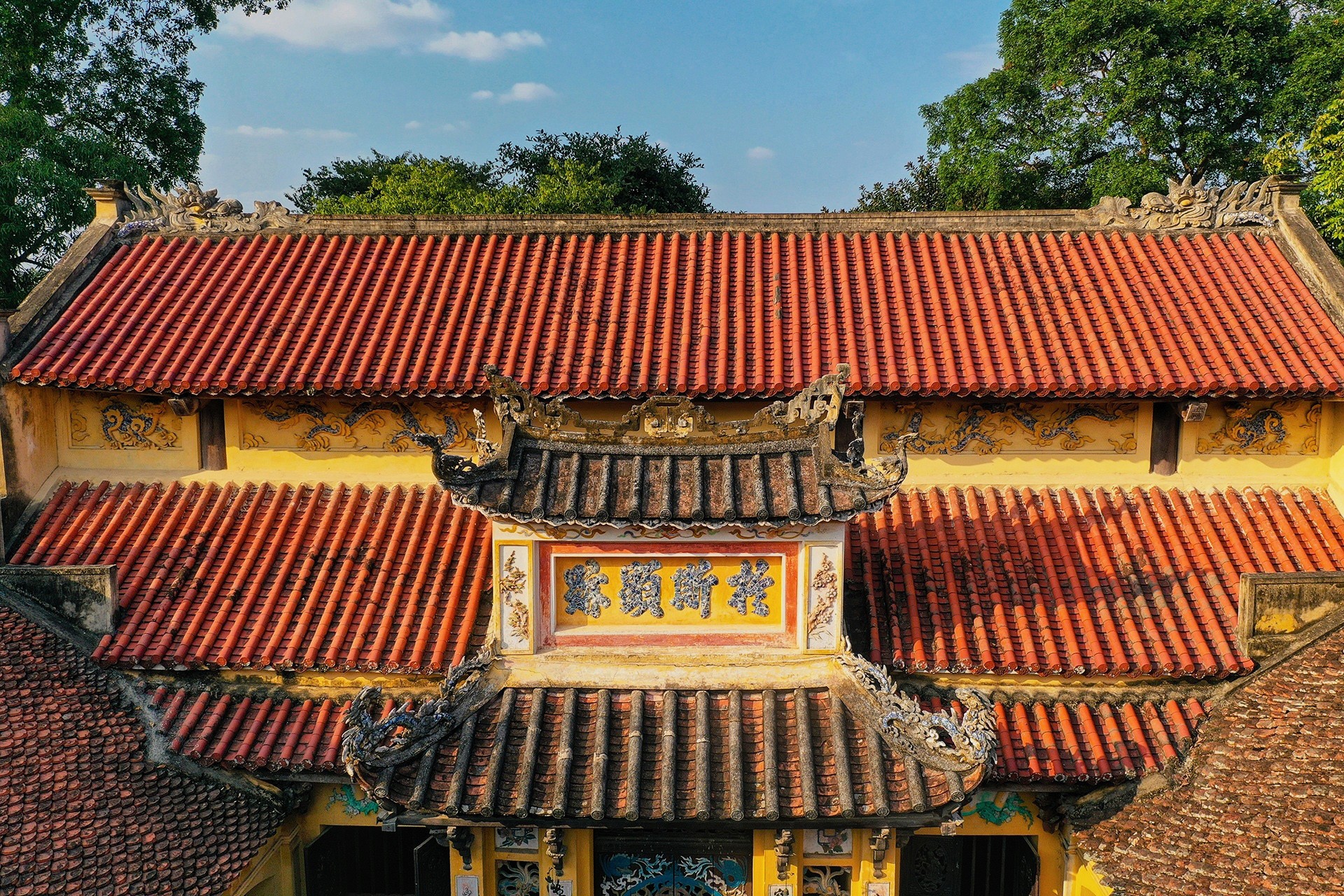 The Tran Thuong Temple festival is typically organized on the 14th day of the first lunar month, featuring a food procession, incense offering, and procession to the sanctuary.
The Tran Thuong Temple festival is typically organized on the 14th day of the first lunar month, featuring a food procession, incense offering, and procession to the sanctuary.
8. What Are Some Travel Tips For Visiting Tran Thuong Temple?
To ensure a smooth and enjoyable visit to Tran Thuong Temple, consider these travel tips:
- Dress Respectfully: Dress modestly when visiting the temple, covering your shoulders and knees.
- Remove Your Shoes: Remove your shoes before entering the main worship areas.
- Be Quiet and Respectful: Maintain a quiet and respectful demeanor inside the temple.
- Ask For Permission: Ask for permission before taking photographs of the worship areas or the monks.
- Learn Basic Vietnamese Phrases: Learning a few basic Vietnamese phrases can enhance your interactions with the locals.
- Stay Hydrated: Drink plenty of water, especially during the hot and humid months.
- Protect Yourself From Mosquitoes: Use mosquito repellent to protect yourself from mosquito bites.
- Bargain Respectfully: When shopping at local markets, bargain respectfully and be mindful of local customs.
8.1 What Should I Wear When Visiting The Temple?
When visiting Tran Thuong Temple, it is important to dress respectfully to show reverence for the sacred space. Appropriate attire includes:
- Covered Shoulders: Wear shirts or blouses that cover your shoulders.
- Covered Knees: Wear long pants, skirts, or dresses that cover your knees.
- Modest Clothing: Avoid wearing revealing or overly tight clothing.
- Comfortable Shoes: Wear comfortable shoes, as you will need to remove them before entering the main worship areas.
8.2 Are There Any Specific Customs I Should Be Aware Of?
Yes, there are several customs you should be aware of when visiting Tran Thuong Temple:
- Respectful Behavior: Maintain a respectful demeanor and avoid loud conversations or disruptive behavior.
- Proper Etiquette: Follow the guidance of local monks and temple staff.
- Offerings: If you wish to make offerings, do so in a respectful manner and follow the instructions of the temple staff.
- Photography: Ask for permission before taking photographs of the worship areas or the monks.
8.3 How Can I Respect Local Culture While Visiting?
You can respect the local culture while visiting Tran Thuong Temple and Ha Nam province by:
- Learning About Local Customs: Researching and understanding local customs and traditions.
- Interacting Respectfully: Interacting with locals in a respectful and courteous manner.
- Supporting Local Businesses: Patronizing local businesses and supporting the local economy.
- Being Mindful of the Environment: Being mindful of the environment and avoiding littering or damaging natural resources.
According to a report by UNESCO, respecting local culture and heritage is essential for sustainable tourism and cultural preservation (UNESCO, 2019, Tourism and Cultural Heritage).
By following these travel tips and being mindful of local customs, you can ensure a respectful and enriching visit to Tran Thuong Temple and Ha Nam province.
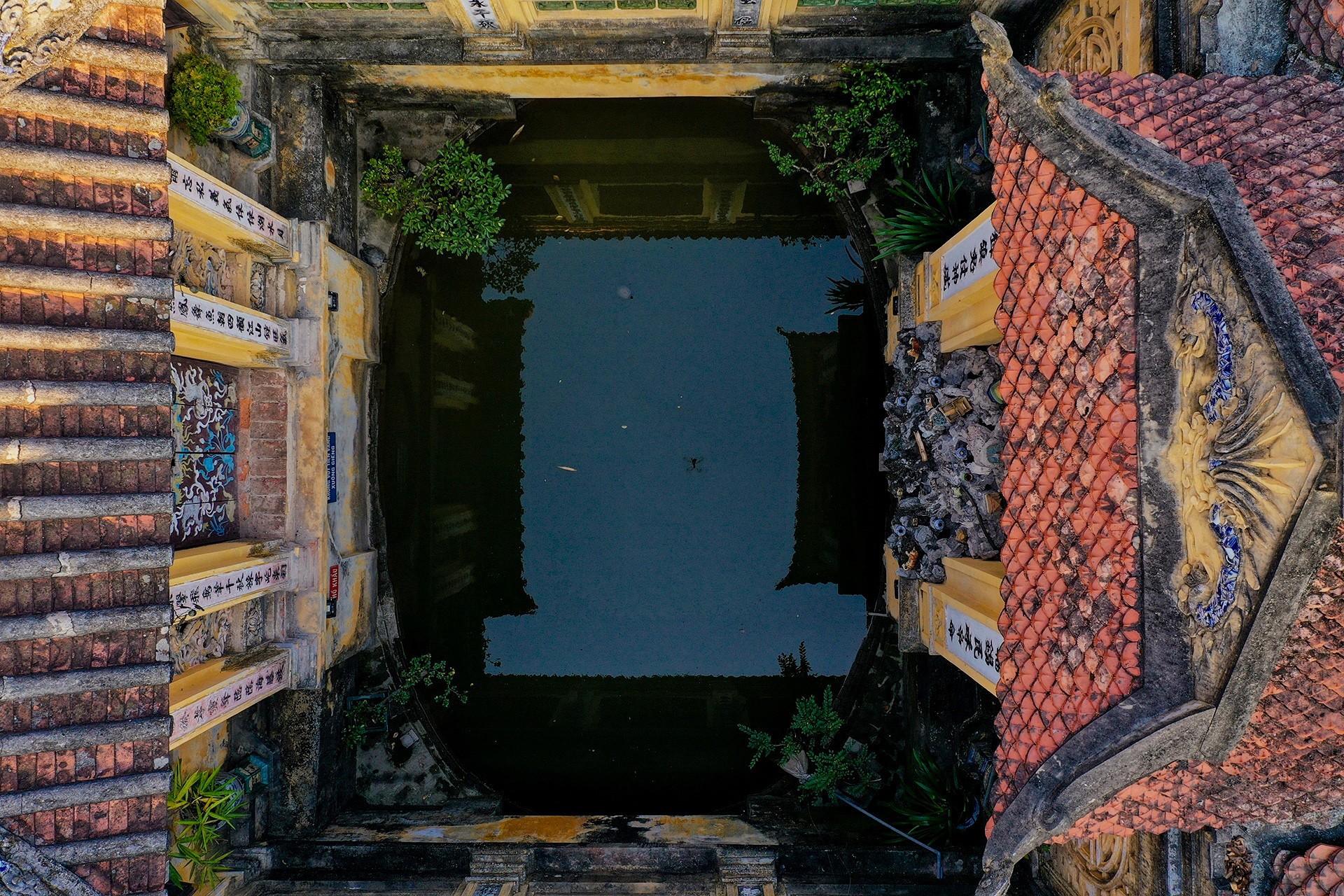 Tran Thuong Temple has become a popular tourist site in Ha Nam.
Tran Thuong Temple has become a popular tourist site in Ha Nam.
9. What Local Foods Should I Try In Ha Nam?
Exploring the local cuisine is an essential part of any travel experience. In Ha Nam province, be sure to try these delicious local foods:
- Banh Cuon Cha Que: Steamed rice rolls served with grilled cinnamon pork.
- Ca Ro Dong Kho To: Braised fish in clay pot, a flavorful and hearty dish.
- Goi Ca Me: Fish salad made with fresh herbs and spices.
- Banh Da Ke: Sesame rice crackers, a popular snack.
9.1 Can You Describe Banh Cuon Cha Que?
Banh Cuon Cha Que is a popular dish in Ha Nam province, consisting of:
- Steamed Rice Rolls: Thin and delicate rice rolls made by steaming a batter of rice flour.
- Grilled Cinnamon Pork: Flavorful grilled pork seasoned with cinnamon and other spices.
- Dipping Sauce: A savory dipping sauce made with fish sauce, vinegar, and chili.
- Fresh Herbs: Served with fresh herbs such as cilantro and basil.
9.2 What Makes Ca Ro Dong Kho To Special?
Ca Ro Dong Kho To is a flavorful braised fish dish that is unique to Ha Nam province. Key characteristics include:
- Earthen Fish: Using fresh fish, typically carp, braised in a clay pot.
- Rich Sauce: A rich and savory sauce made with fish sauce, sugar, and spices.
- Slow Cooking: Slow-cooked to allow the flavors to meld together.
- Hearty Flavor: A hearty and comforting dish that is perfect for a cold day.
9.3 Where Can I Find The Best Local Food In Ha Nam?
You can find the best local food in Ha Nam at:
- Local Markets: Explore local markets for a wide variety of street food and local specialties.
- Street Food Stalls: Sample delicious and affordable dishes at street food stalls.
- Local Restaurants: Dine at local restaurants for authentic and traditional Vietnamese cuisine.
- Food Festivals: Attend local food festivals to experience a wide range of culinary delights.
According to a survey by the Vietnam Culinary Culture Association, Ha Nam province is renowned for its diverse and flavorful cuisine (Vietnam Culinary Culture Association, 2021, Culinary Map of Vietnam).
Sampling the local foods of Ha Nam province is a culinary adventure that will delight your taste buds and provide a deeper connection to the local culture.
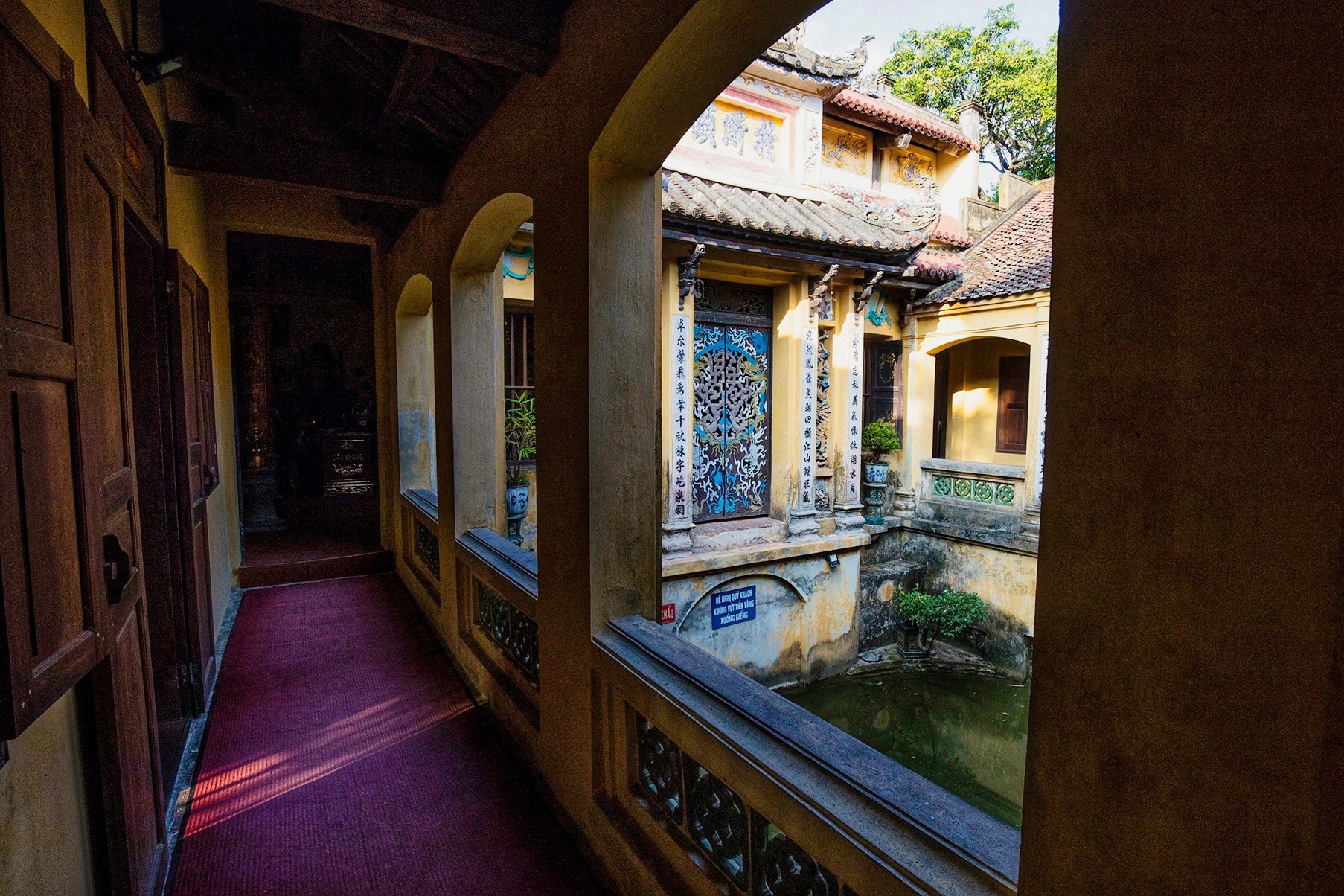 The temple is located in Nhan Dao commune of Ly Nhan district, chosen by Tran Hung Dao as a food storage area during the fight against invaders.
The temple is located in Nhan Dao commune of Ly Nhan district, chosen by Tran Hung Dao as a food storage area during the fight against invaders.
10. FAQ About Tran Thuong Temple
10.1 Is There An Entrance Fee To Visit Tran Thuong Temple?
No, there is typically no entrance fee to visit Tran Thuong Temple. It is a public site and welcomes visitors free of charge.
10.2 Are There Guided Tours Available At The Temple?
While there may not be formal guided tours available directly at the temple, SIXT.VN can arrange for a knowledgeable guide to accompany you and provide insights into the temple’s history and significance.
10.3 Can I Take Photos Inside The Temple?
You can take photos inside the temple, but it is important to ask for permission before photographing the worship areas or the monks. Always be respectful and avoid using flash photography.
10.4 Are There Restrooms Available At The Temple?
Yes, there are restroom facilities available for visitors at Tran Thuong Temple.
10.5 Is There A Dress Code For Visiting The Temple?
Yes, it is important to dress respectfully when visiting Tran Thuong Temple. Wear modest clothing that covers your shoulders and knees.
10.6 What Is The Best Way To Get To Tran Thuong Temple From Hanoi?
The best way to get to Tran Thuong Temple from Hanoi is by car, bus, or train. SIXT.VN can provide airport transfers, car rentals, and transportation services to make your journey seamless and convenient.
10.7 Can I Buy Souvenirs At The Temple?
There may be small shops or vendors near the temple where you can purchase souvenirs, local crafts, and religious items.
10.8 Are There Any Festivals Or Special Events Held At The Temple?
Yes, the Tran Thuong Temple Festival is held annually from the 18th to the 20th day of the eighth lunar month, and the food-distributing festival takes place on the 14th day of the first lunar month. These festivals offer a unique cultural experience.
10.9 What Is The History Of Tran Thuong Temple?
Tran Thuong Temple is dedicated to Tran Hung Dao, a revered national hero who played a crucial role in repelling the Mongol invasions in the 13th century. The temple serves as a place of worship and remembrance for his contributions to the nation.
10.10 How Can SIXT.VN Help Me Plan My Trip To Tran Thuong Temple?
SIXT.VN offers a range of services to help you plan your trip to Tran Thuong Temple, including airport transfers, car rentals, hotel bookings, and tour packages. We can customize your itinerary to suit your preferences and budget, ensuring a smooth and memorable experience.
Ready to explore the historical and cultural richness of Tran Thuong Temple and Ha Nam province? Let SIXT.VN be your trusted travel partner. Contact us today to plan your unforgettable journey! Address: 260 Cau Giay, Hanoi, Vietnam. Hotline/Whatsapp: +84 986 244 358. Website: SIXT.VN.



